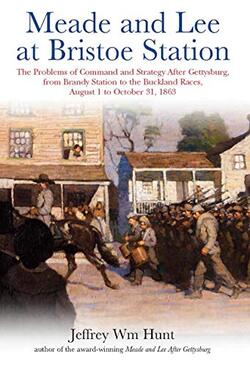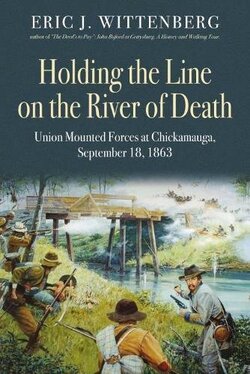
Jeffrey Wm Hunt
Savas Beatie, 2019, 480 pages, $34.95
ISBN: 978-1-61121-396-6
Image courtesy of amazon.com
I’ve said this many times when it comes to the Battle of Gettysburg. The fight did not end with the failure of Longstreet’s Assault on the third day of battle, or Pickett’s Charge as it’s more well known. There were still many fights to be had in the campaign, including the retreat back into Virginia. Thanks to Jeffrey Wm Hunt, he’s been taking care of that. In his previous work, Meade and Lee after Gettysburg, he began to chronicle the retreat and the fights that ensued on the road. Here in Meade and Lee at Bristoe Station, he continues that work.
Jeffrey Wm Hunt is the author of Meade and Lee After Gettysburg, and gained his Bachelors Degree in Government and his Masters Degree in History from the University of Texas. He is the Director of the Texas Military Forces Museum and an adjunct professor of History at Austin Community College. He’s been teaching there since 1988. He also served as the Director of the Living History Program at the Admiral Nimitz National Museum of the Pacific War in Fredericksburg.
As stated before, this book continues the narrative from Meade and Lee After Gettysburg. From there, we take a look at the continuing operations, and it doesn’t disappoint. While I know this is a history book, the action is fast paced, and often times feels like we’re moving from exciting battle to exciting battle. Robert E. Lee continues to struggle with his corps commanders, mainly in the form of A.P. Hill, and the tug of war pushed through Pennsylvania until the Confederate forces could retreat across the Rappahannock River. However, this book also shows the struggle Meade had with trying to run the battles in his own way, eventually leading to interference from Washington. Meade’s actions during the campaign have always fascinated me, and the political nature of command is shown here in droves. It is possibly one of the things I enjoy most about this book. While Hunt could continually talk about the battles, and I wouldn’t mind if he did, it was the politicking that intrigued me. Success and failure are one thing, but blame is another, and that is prevalent in one of the concluding chapters concerning the retreat and pressure from Washington that Meade felt. Hunt’s narrative is wonderfully written, and overall, I think that this book perhaps takes care of one major flaw in how we see the battle today. We often see Lee and his army slowly trudging back to Virginia after Gettysburg, but this book proves different. It shows that the fight was still there, and I appreciate that.
I highly recommend this book to anyone interested in the Gettysburg Campaign. Not only is it well researched and well documented, it is told in a sweeping narrative that reads oftentimes like a novel. The amout of fighting during this period is well chronicled, and I can see his work being read for years by scholars and students alike. This proves, yet again, that we still have a lot to learn about the Gettysburg Campaign. Highly Recommended.

 RSS Feed
RSS Feed
